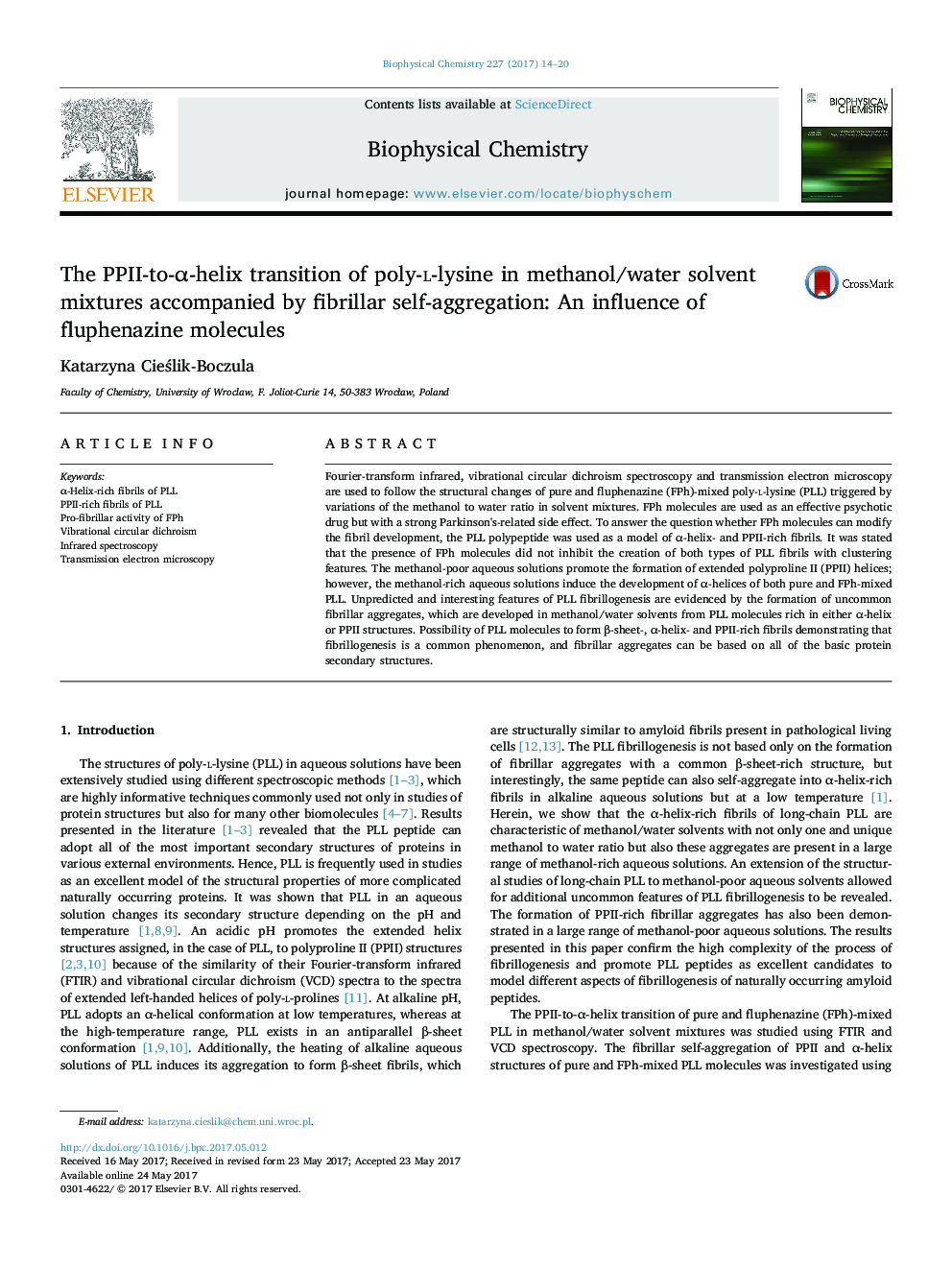| Article ID | Journal | Published Year | Pages | File Type |
|---|---|---|---|---|
| 5370635 | Biophysical Chemistry | 2017 | 7 Pages |
â¢In methanol/water mixtures both α-helix- and PPII-rich fibrillar aggregates of PLL are present.â¢Transition between both types of fibrils is triggered by changes in methanol to water ratio.â¢The presence of FPh molecules did not inhibit the creation of both types of PLL fibrils.
Fourier-transform infrared, vibrational circular dichroism spectroscopy and transmission electron microscopy are used to follow the structural changes of pure and fluphenazine (FPh)-mixed poly-l-lysine (PLL) triggered by variations of the methanol to water ratio in solvent mixtures. FPh molecules are used as an effective psychotic drug but with a strong Parkinson's-related side effect. To answer the question whether FPh molecules can modify the fibril development, the PLL polypeptide was used as a model of α-helix- and PPII-rich fibrils. It was stated that the presence of FPh molecules did not inhibit the creation of both types of PLL fibrils with clustering features. The methanol-poor aqueous solutions promote the formation of extended polyproline II (PPII) helices; however, the methanol-rich aqueous solutions induce the development of α-helices of both pure and FPh-mixed PLL. Unpredicted and interesting features of PLL fibrillogenesis are evidenced by the formation of uncommon fibrillar aggregates, which are developed in methanol/water solvents from PLL molecules rich in either α-helix or PPII structures. Possibility of PLL molecules to form β-sheet-, α-helix- and PPII-rich fibrils demonstrating that fibrillogenesis is a common phenomenon, and fibrillar aggregates can be based on all of the basic protein secondary structures.
Graphical abstractDownload high-res image (156KB)Download full-size image
